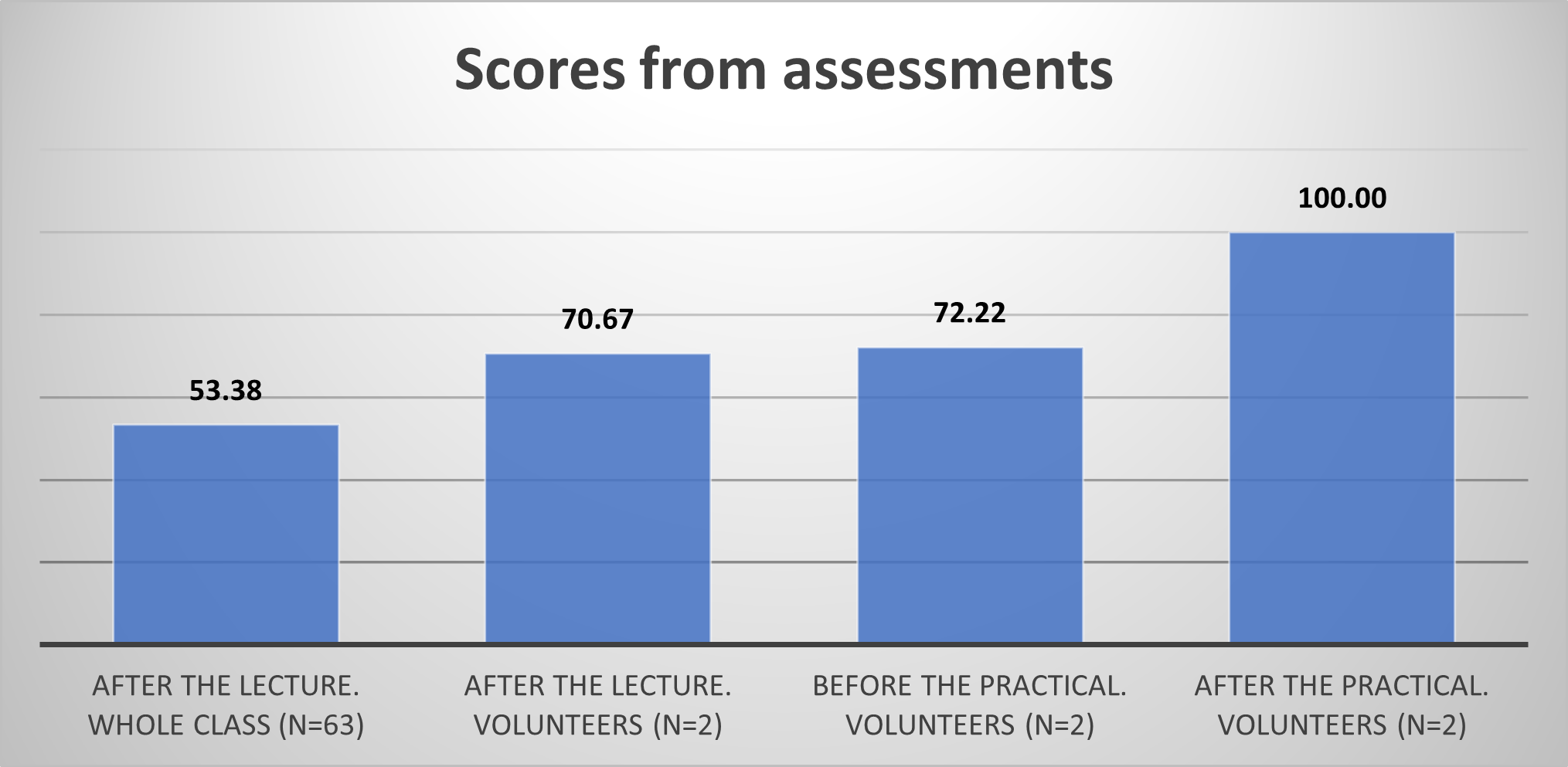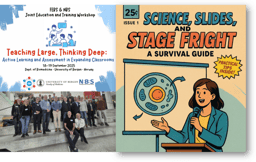Learning urinalysis in the comfort of home: lessons from a pilot study.

COVID pandemic had a tremendous impact on education, testing the limits of our ability to adapt. Many institutions had to move to a full-online or very least a blended curriculum with little time to prepare. On the bright side, powerful online tools become widespread as more and more educators discovered the advantages of a virtual learning environment. Despite uncertainties of the situation and numerous new challenges rising in a daily basis, education persevered in many countries by adopting novel strategies, being flexible and innovative (1). On the other hand, we also discovered that online delivery was more difficult for some educational activities than others. And at the top of the list there were biochemistry practicals.
Even though there are many online tools that instructors may utilize for biochemistry practicals including LabSims and smart worksheets (of Learning Science) as well as virtual laboratories, most of such tools are designed to assist (not to replace) a Lab practical. This is partly due to multiple purposes Biochemistry practicals are expected to serve in a curriculum. They can be utilized to reinforce the learning of a theoretical concept (such as enzyme activity or scientific method) as well as to teach various professional skills (using lab devices, conducting research practices, data management/ presentation etc.). Moreover, they may provide learners with an opportunity to develop their teamwork skills in a dynamic and engaging educational environment, they may reward learners with a sense of achievement after completion and positively impact learners' appreciation of the field inducing a sense of belonging. That being said, I believe when multiple online tools are combined and utilized carefully, they can indeed replace some of the practicals or replace some parts of certain practicals. Especially goals corresponding to "reinforcing the learning of theoretical concepts" can be accomplished via online tools without much difficulty . However, it is somewhat trickier when we move on to "teaching professional skills" goal. Especially in medical education, many skills such as phlebotomy or urinalysis, require a hands-on approach. Last year however, when we could not bring the learners in for their skill training sessions we decided to run a pilot study to test whether we can teach at least a part of urinalysis (chemical analysis by a dipstick test) via distance learning.
How did we do it?
I first delivered an online theoretical lecture on urinalysis, including how to perform and evaluate a dipstick test. I also shared a YouTube video demonstrating the procedure in detail. Then, as a part of their midterm, their understanding of the urinalysis was assessed via an exam.
We, then moved on collecting volunteers for a practical distance learning session. Unfortunately, we only had two volunteers (from 63 total learners). On the bright side, those two were not only cooperative but also supportive and I can say that they have become members of the the team conducting this research in addition to being a very small sized sample group. Our teaching assistant Hasan Kazdağlı (PhD), has collected their addresses and made sure that urine containers, 10 parameter dipsticks, a printed out color chart, as well as gloves were delivered to them before the time of the practical. I also shared the guide (protocol) with them which contained a risk assessment section. They were instructed to cover the surface they are going to work on with stretch film, put their gloves and lab coats on. I also informed them regarding this tiny educational research project and received their consent on the matter. They were kind enough to let me use these screenshots from the practical as well:
-From seriousness during the practical to the joy after completing it successfully. If you look closely you can even see me.
At the beginning of the session, I have conducted a pre-test exam on urinalysis with similar questions to what they have had previously answered in their midterm. During the practical, after making sure that they have read the guide, I demonstrated what to do, step by step and monitored their progress while they were performing the test on their own urine which they have collected before the practical. We then moved on to evaluation. That part was trickier as the cameras and monitors alter the colors slightly making it difficult for me to assist them with their evaluation. After some struggle, we decided that all the evaluated parameters were normal for both of them and concluded the practical. After the practical I conducted a post-test exam with the same questions as the pre-test. Both Ali Suna and Ezgi Ceren remarked their satisfaction with the activity and told me that they would like to be part of future activities of similar nature.

When I looked at the data obtained from the exams, I realized that the average score of volunteers in the midterm was already higher than the class average. I think this is some kind of a selection bias as becoming a volunteer might suggest that they were more enthusiastic about the subject to begin with. Even though it was slightly increased in the pre-test, as expected the real change came after the practical as both learners scored perfect 100s.
In conclusion, I think it is possible to conduct a distance-learning practical for dipstick tests with some preparation and planning (lab guide, logistics, time management, etc.). It is important to note that not all learners might have a comfortable space in which they can perform such experiments. Socioeconomical differences may impact the viability of this approach and that is why we worked only with volunteers. I must also underline that it was more difficult to direct and assist learners via videoconference compared to face-to-face, and I am not sure whether it would have worked smoothly with 60+ learners.
Special thanks to teaching assistant Hasan Kazdağlı and learners Ali Suna Serter and Ezgi Ceren Kutlu for their contribution and support.







Join the FEBS Network today
Joining the FEBS Network’s molecular life sciences community enables you to access special content on the site, present your profile, 'follow' contributors, 'comment' on and 'like' content, post your own content, and set up a tailored email digest for updates.
Highly original and encouraging, Burak!
Thanks for sharing. This may prompt new initiatives among instructors.
Thank you very much Angel, I hope it does.